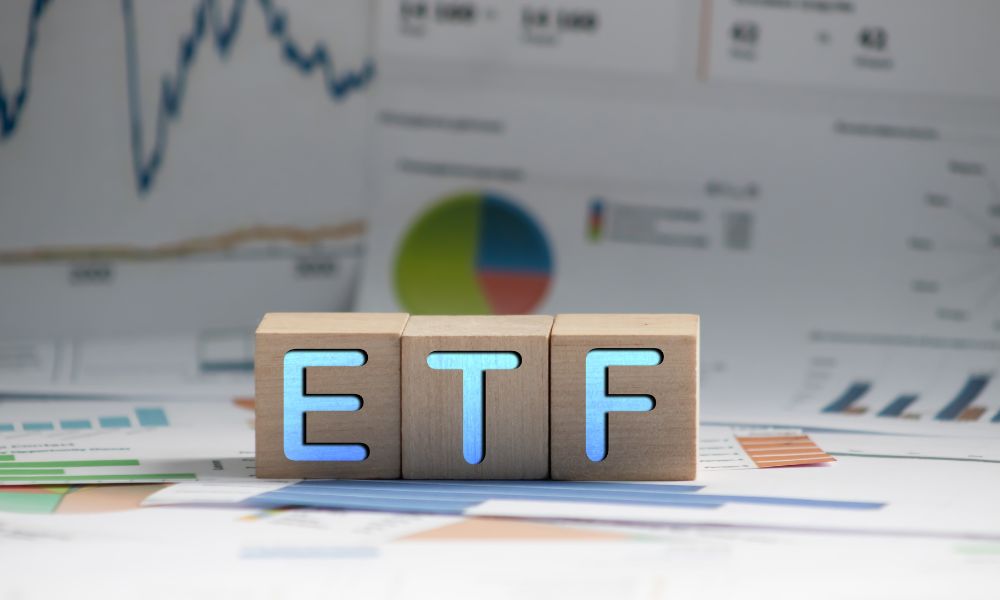by Leslie N. Masonson, MBA
My September 9th blog article on ETF investment strategies covered the basics for investors. This article focuses on ETF trading strategies, which is much more challenging than simple investing, as they may involve entering and exiting positions over minutes, hours, days or weeks, depending on the type of trading style you use
Key Trading Considerations
Firstly, traders need to make many more frequent decisions than investors: what to buy, when to buy, and when to sell. Trying to accurately achieve the optimal security selection and address short-term timing issues is the big challenge. Unsuccessful trading has bankrupted more individuals than it has made them millionaires. Research data available indicates that at least 90% of day traders eventually quit or lose money. That should be a cautionary note for those who think they can become successful day traders in a few weeks or months. It can’t be done, as every successful trader will tell you.
The problem is that most individuals fail as traders because they can’t leave their egos at the door. Just because you may be a doctor, lawyer, engineer, or any other successful professional or blue-collar worker does not guarantee trading success. Moreover, many potential traders may not be using the appropriate approach, rules-based strategy, or software. Also, they may not possess the required time or emotional makeup to be successful in trading the markets.
Trading successfully takes many years to achieve, not days, weeks, or months. For example, Mark Minervini, the well-known and very successful trader and author, took five years before he made money trading when he started out. Can you wait that long under those circumstances before quitting? Probably not.
What saved Mark was his development of rules that he never violates, like using a stop-loss order to limit losses and using Bill O’Neil’s cup-and-handle pattern to get into a position, among a dozen other rules. In a recent interview, he said that he has not violated any of his rules in 25 years!
Obviously, if you want to trade, the first step is to assess your own skill set and other key factors to determine if trading is something that you can handle without becoming flustered. The more important questions you need to answer were provided as bullet points that equally applied to investors in my September 9 article, so check them out.
Assuming you have decided to trade, you need to determine whether you will be a day trader, swing trader, or position trader based on your risk tolerance, available risk capital, time commitment, and psychological makeup. These three trading styles are based on the time you are in trade. So, position traders may be in a trade for a day or a week, while swing traders may be in a trade for weeks or months. To get a perspective on which style may suit you best, I recommend that you read a few books by the following authors: Dr. Alexander Elder, William J. O’Neil, Dr. Van K. Tharp, Mark Minervini, and Mark Douglas. They cover all the key aspects of trading and will provide you with a solid foundation.
Technical tools should also be applied to your ETF charts, such as short-term moving averages like the 8-EMA, 20-day, and 50-day SMA, MACD, Bollinger Bands, trend lines, and any others you prefer. Be careful not to clutter your screen too much, or you will not be able to discern the key turning points. Interestingly, some of the top traders use only price and volume and simple trend lines to trade the market. Do what works best for you.
ETFs Provide Many Ideal Trading Alternatives
Why trade ETFs instead of stocks? For the simple reason that an ETF portfolio of 25 to 500 stocks is less risky than owning a handful of individual stocks that are subject to negative earnings reports, investor lawsuits, accounting malfeasance, SEC fines, industry and group correlation, competition, and other factors that can knock the stock for a loop on any bad news, at any time.
You also need to be knowledgeable about risk, position sizing, market sentiment, and psychology, and have at least a 2:1 ratio of your potential gain to your potential loss. Many traders only take on positions with a 4:1 ratio or higher based on their analysis.
With nearly 3,200 ETFs valued at $7.4 trillion to choose from, how does one determine which ETFs to trade? A few critical criteria are assets under management of at least $100 million (preferably $1 billion), high daily trading volume (over 1 million shares a day), a tight bid-to-ask spread like $0.01 to $0.03, an ETF in an uptrend above its 10-, 20-, 50-, and 200-day moving averages, and in a leading business sector and industry group (in the top 25 out of VectorVest's 222) based on VST and RT. Stocks move in herds as industry groups gain and lose favor based on their fundamentals.
For example, if you want to buy a few sector, thematic, crypto, or cannabis ETFs, there are hundreds to choose from. Just use the VectorVest "ETF Viewer" to view the top 50 out of the 1,900 covered to see what's working now. Once you have your ETF portfolio, place stop LIMITs or trailing stops on each one at appropriate technical levels or a percentage, whichever you prefer. Also, on a daily basis, check out VectorVest looking for any ETF "Sell" signals, and ride any trend up as far as you can.
Of course, if the stock market is in a downtrend and you may want to put some cash to work. To do that, consider inverse ETFs (called Contra ETFs by VectorVest) for purchase. Since you are buying these "long," there is no need to sell shares short and incur margin borrowing fees. Remember that only ETFs, not stocks or mutual funds, offer this no-cost approach to participating in a down market.
Your next step is to find those Contra ETFs that are the strongest in performance based on RT (Relative Timing). Also, check to see if VectorVest rates them as "Buy" in the "ETF Viewer" screen before taking a position. Be careful about buying a Contra ETF after the market takes a 5% hit, as small pullbacks are normal, and many times the market snaps back quickly, resulting in losses if holding Contras just purchased.
Extremely aggressive and knowledgeable investors can purchase leveraged ETFs and single stock ETFs, but the risk is much higher on both the upside and downside. The UniSearch tool under the ETF category lists many ETF searches, including leveraged ones. Buying a 3X ETF, such as TQQQ, requires only one-third of the capital of buying QQQ, for the same exposure. For example, if you were planning to invest $10,000 in QQQ, you could invest $3,333.33 in TQQQ and place the remaining $6,666.67 in a safe 5% T-bill or short-term bond ETF. Of course, you need to have stops in place and watch TQQQ like a hawk to make sure you are on the right side of the market.
ETFs offer traders an immense field of investable assets that can be used to build very unique portfolios to capture short-term market moves. Investors need to be nimble and follow their trading rules and setups. VectorVest provides the basis for your decision-making, as the number crunching has been done for you. If you are not yet ready to trade, then set-up a few ETF watchlists and follow them to get the feel for the market and how they move. The more time you spend following the market and your ETF choices, coupled with building your market knowledge, and non-emotional rules-based trading, the more success you will encounter. Although trading is a short-term approach, learning and education takes a life-time.
Want These Types of Insights at Your Fingertips so You Can Win More Trades?
Use VectorVest to Analyze any stock free. VectorVest is the only stock analysis tool and portfolio management system that analyzes, ranks and graphs over 18,000 stocks each day for value, safety, and timing and gives a clear buy, sell or hold rating on every stock, every day.
Before you invest, check VectorVest! Click here to ANALYZE ANY STOCK FREE and see our system in action!











Leave A Comment